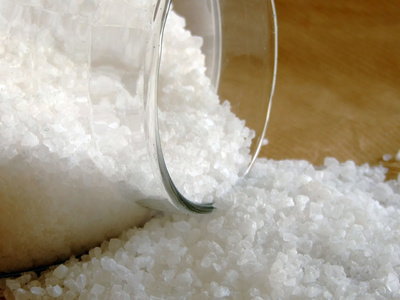Earlobe piercings are common, but an increasingly large number of people are also showing great interest in cartilage piercings. The cartilage is the upper part of your ear and is one of those areas where piercings can be quite dangerous and lead to infections. It is never easy to deal with a cartilagepiercing bump because it is not that responsive to antibiotics. A cartilage piercing has greater chances of catching infections – the infection rate for cartilage piercings is 34%, whereas it's 22% for body piercing. Keep reading to find out how you can deal with a cartilage bump.
Causes of Cartilage Piercing Bump
There are a number of reasons why you have to deal with a cartilage piercing bump, and some of them are listed below.
1. Unhygienic Procedures
This is the biggest cause of infections. You may go to a piercer who uses unsterilized equipment, such as gun and needle. Getting your piercings done with unsterilized equipment is a surefire way of getting infected because bacteria can transfer from person to person.
2. Wearing Inexpensive or Inappropriate Jewelry
This will also lead to infections and development of cartilage piercing bump. Wearing jewelry in a material that you're allergic to will cause infections. Nickel is more often the culprit. You will be better off wearing jewelry made from gold, stainless steel, or titanium.
3. Not Maintaining Personal Hygiene
This could be as likely dangerous. You need to pay attention to keep your pierced area clean and dry while it is still healing. Also, ensure that your hair doesn't touch your piercing because it can cause infections.
In addition, you may end up getting a cartilage piercing bump as a result of some physical injuries, over cleaning of the piercing, and the use of a piercing gun. Regularly touching your jewelry may also cause an infection.
Symptoms of Cartilage Piercing Infection
Getting a cartilage piercing bump is usually an indicator that you've developed an infection, but there are several other symptoms that will appear after 3-4 weeks of the piercing. You will experience severe pain upon touching the pierced area. Other common symptoms include redness of the skin around your piercing with tenderness and pain on the cartilage. You should also look for the following symptoms to get your infection treated while it's just in its early stages:
- Discharge of yellow or green pus from the affected area
- Hotness on the area around your piercing
- Fever in serious cases, especially if Pseudomonas aeruginosa is responsible for your infection
- Prolonged bleeding followed by a crush formed on your piercing
These are some of the most common signs of an infected cartilage, so go see your doctor when you notice any of these issues.
Treatments of Cartilage Piercing Bump
If you have developed a cartilage piercing bump, it is important to identify the best treatment option to correct the issue. You need to understand that your cartilage piercing will heal in three stages:
- The first stage is the inflammatory stage in which your wound is still open.
- The second stage is growth stage in which your body produces collagen.
- The final stage is remodeling or maturation stage in which disorganized collagen fibers repair and realign.
You can experience issues in any of these healing stages, but you can always make use of the following remedies to help clear the infection:
1. Seat Salt Soaks
Take a clean bowl and add 8 ounces of warm water with 1/4 teaspoon of sea salt to it. Mix well and use it directly on your bump – you can use a cotton ball for application. Leave it there for 10 minutes and then rinse it off completely. Doing it twice a day will help get rid of your cartilage piercing bump.

2. Chamomile Tea
To make the sea salt treatment even more effective, simply place a chamomile teabag in a container, boil it, and place it on your piercing. You can use it after applying the sea salt for better results.

3. Aspirin
Aspiring helps open up your blood vessels and triggers healing. Simply crush a tablet and add it to a bowl. Pour some water in the bowl to make a paste. Apply it with a cotton ball directly on the affected area for relief.

4. Lemon Juice
Lemon juice can work amazingly well on your cartilage piercing bumps because it can clear bacterial infections. Just squeeze a few drops of lemon in a small bowl. Add some water to it and apply the mixture on your affected area with the help of a cotton ball. Repeat a couple of times during the day for relief.

5. Tea Tree Oil
The antibacterial properties of tea tree oil make it a great remedy for cartilage piercing bumps. You just need to dab a cotton ball in the oil and apply it directly on the affected area. Do it once a day for a week to see results.

6. Warm Water Cleaning
If you don't have any oil available at home, you can simply use warm water for pain relief. Just dab a flannel cloth in warm water and use it to clean the affected area. Make sure that your pierced area is clean, which will accelerate healing.

These treatment options usually work great, but sometimes a severe infection needs medical attention. If your cartilage piercing bump doesn't improve after a few days, you should go see your doctor, who will prescribe antibiotics to clear your infection. Your doctor may also prescribe topical creams for pain relief or decide to remove your bump surgically.
